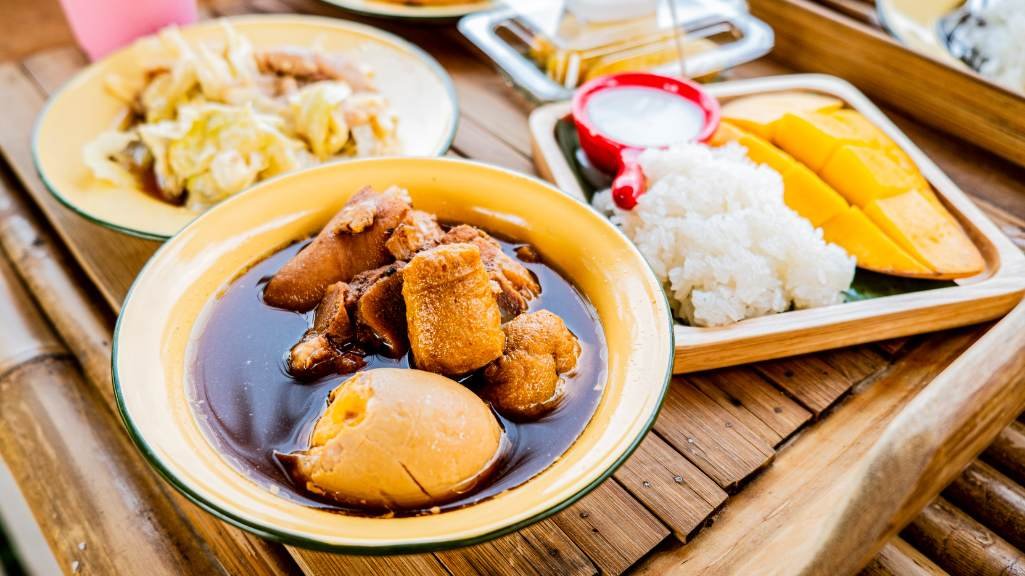Exploring the World Through Food: Best Dishes to Try on Your Next Travel Adventure
Vihaan Disouza
. 3 min read
A vital part of tourism is also looking out for memorable and unique eating and drinking experiences anywhere in the world. Often termed as food tourism, this pursuit is categorized under experiential travel. Just like there are lists of best hotels to stay in and best places to visit, there should also be a food dishes list to narrow down the best items around the world. By engaging in omegle chat, individuals can exchange recommendations, insights, and personal experiences related to food and drinks, enriching their understanding and exploration of global culinary delights.

List of Best Dishes in the World Suggested by Experts and Travelers
1. Sushi (Japan)
As a result of the global expansion of this iconic dish, many misconceptions about sushi have developed. For example, many people mistakenly believe that sushi simply means “raw fish." While the dish is synonymous with raw fish now, there is much more to the story. Sushi is the combination of the words “su” and “meshi”. In English this means vinegar and rice. Sushi refers to the slightly sweet, vinegar rice, sometimes called shari, paired with a garnish or neta of seafood, egg or vegetables either raw or cooked. In many countries, sushi is a pricey, sophisticated dinner eaten at special occasions.
2. Rendang, Indonesia
Rendang is not actually a name for a dish. It's basically a philosophical term that refers to a special process, which makes beef tender, dry, and flavorful. The complex cooking process gives rendang a very unique and delicious taste. And that is why, on 14th April 2021, CNN highlighted Rendang as the 11th spot in their list of World’s 50 Best Foods. On 9 April 2018, Indonesia’s Ministry of Tourism chose rendang as a national dish, along with soto, nasi goreng, sate, and gado-gado.
3. Ramen, Japan
Ramen has become a national dish in Japan and is widely known overseas, including throughout the United States, but when asked to define it, even Japanese people may have a hard time doing so. Its origin may not be as simple to explain as one would expect, and while the Japanese recognize ramen as a food that originated in China, there’s inconsistency with the Chinese perception of the dish as they often call it, “Japanese-style ramen,” and recognize it as Japanese food. In addition, there are countless soups and noodle variations, starting with “tonkotsu”, “shoyu”, and “miso”, that might obscure the definition.
4. Tom Yam Goong, Thailand
Tom Yum is one of the best known Thai dishes, a spicy, sour, and aromatic soup that is traditionally served with rice. It consists of shallots, lemongrass, fish sauce, minced fresh ginger or galangal, shrimps, mushrooms, kaffir lime leaves, lime juice, and minced thai chili peppers. Usually served as an appetizer, tom yum is traditionally garnished with coriander leaves on top. Due to its popularity, different versions of the soup started to appear over the years, such as tom yum gai, with added chicken, and tom yum talay, with mixed seafood.
5. Kebab, Turkey
Kebab is a common name for various skewered meat dishes from Turkey. Marinated meat is placed on a skewer and grilled slowly over hot coals. It is a symbol of Turkish cuisine, a legacy of ancient times of the Ottomans when soldiers who camped in tents skewered the meat on their swords and cooked them over an open fire. It is a symbol of Turkish cuisine, a legacy of ancient times of the Ottomans when soldiers who camped in tents skewered the meat on their swords and cooked them over an open fire.
Conclusion
In conclusion, food tourism has become an important part of experiential travel, where travelers seek out unique and memorable eating and drinking experiences around the world. Just like there are lists of best hotels and places to visit, there should also be a food dishes list to help travelers narrow down the best items to try. Experts and travelers suggest some of the best dishes in the world, including sushi from Japan, rendang from Indonesia, ramen from Japan, tom yum goong from Thailand, and kebab from Turkey. Overall, food tourism is a valuable and enjoyable aspect of travel that adds to the richness of one's experiences.
More Stories from
Reasons Why Reading While Traveling is a Great Idea?
Reading while traveling is a great way to pass the time and keep yourself entertained during a long journey.
Top Women/Men in Beauty Influencers to Follow 2023
This article highlights nine popular beauty influencers on Instagram, including their backgrounds, accomplishments, and what sets them apart from others in the industry.
Canva: Empowering Creativity and Design Simplicity
Discover how Canva, the user-friendly graphic design platform, has revolutionized the world of visual communication.
The Rise of Virtual Travel: Exploring the World from the Comfort of Home
This article explores the surging popularity of virtual travel, a modern phenomenon that allows individuals to experience the world's wonders from the comfort of their homes.
The Art of Photography: Capturing Moments that Last a Lifetime
In this article, we explore the fascinating world of photography, tracing its evolution from its early beginnings to the digital age.







.png?width=40&aspect_ratio=1:1)
.png?width=40&aspect_ratio=1:1)




.png?width=40&aspect_ratio=1:1)